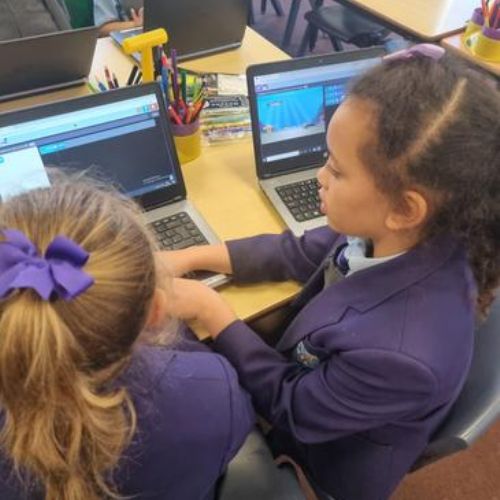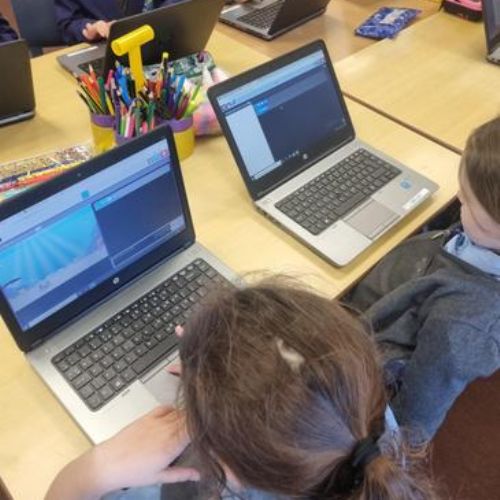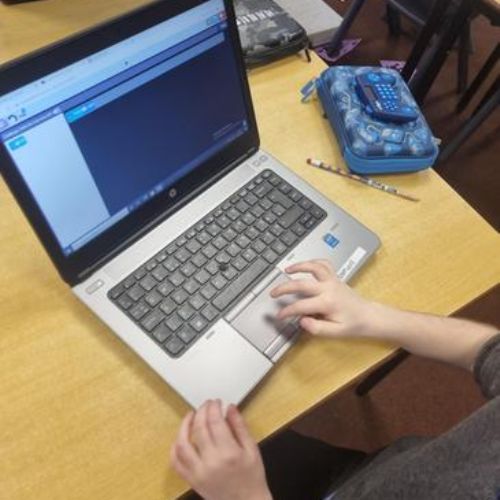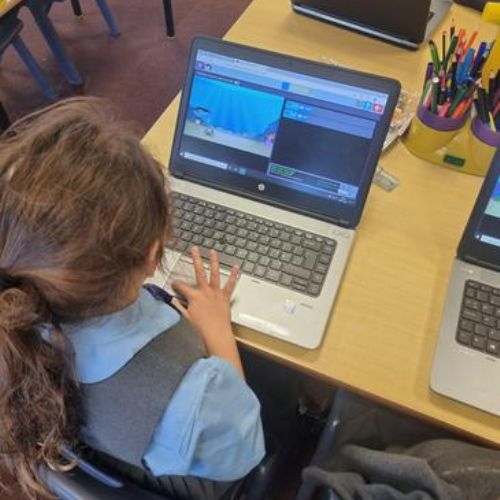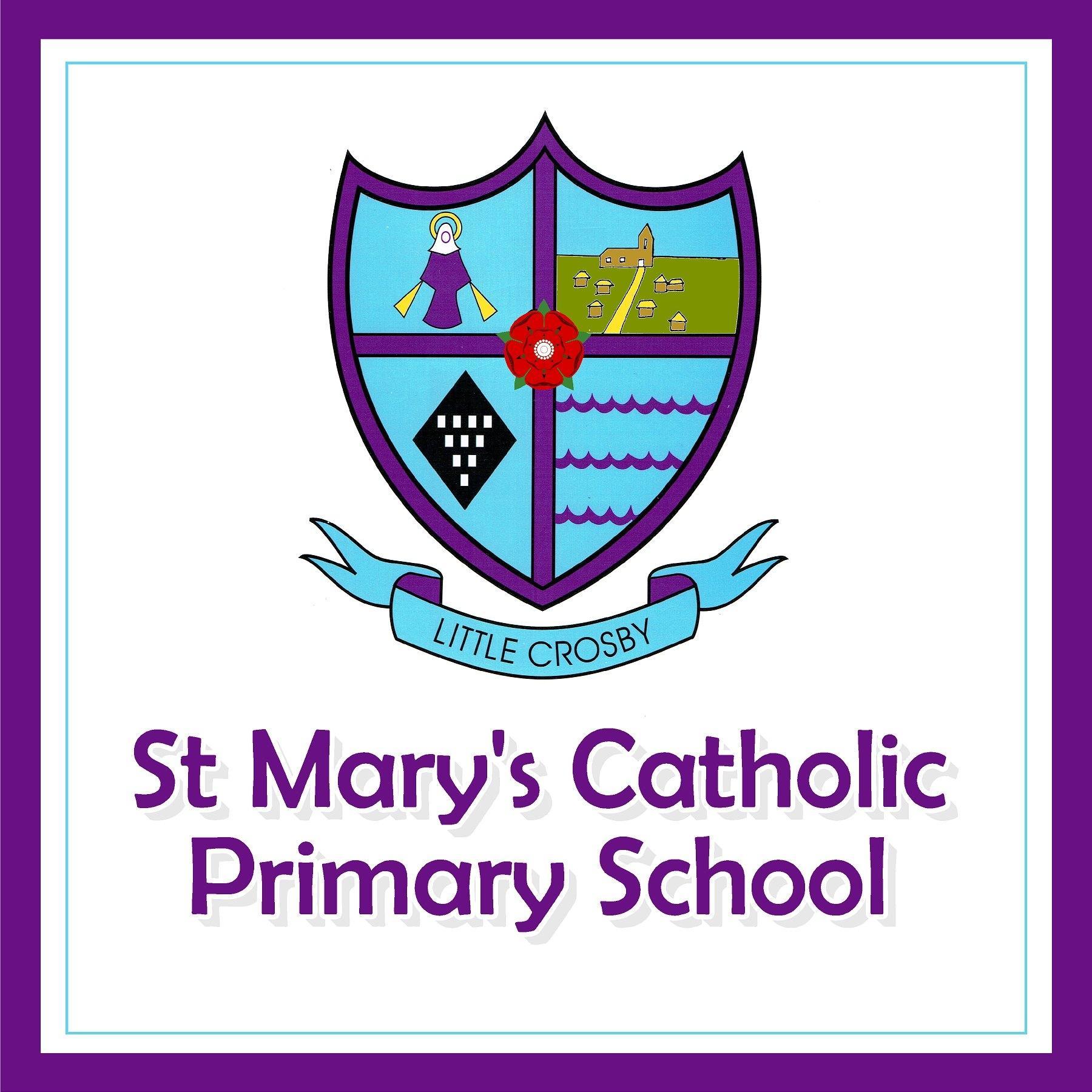
St. Mary's Catholic Primary School
Computing Curriculum
Computing Curriculum Vision:
At St. Mary’s Catholic Primary School, we value the contribution that technology can make for the benefit of all pupils, staff, parents and governors. We aim to provide safe and enjoyable opportunities to use technology and for this to motivate and inspire pupils as well as raising standards across the curriculum. We hope for our children to become lifelong learners who are equipped with the knowledge and skills required for the demands of an ever- changing world of technology.
Intent
At St Mary’s Catholic Primary School, we understand the immense value that technology plays not only in supporting the Computing and whole school curriculum but overall in the day-to-day life of our school. Our aims are to fulfil the requirements of the National Curriculum for Computing whilst also providing enhanced collaborative learning opportunities, engagement in rich content and supporting pupil’s conceptual understanding of new concepts.
Implementation:
Here at St. Mary's we follow the Purple Mash scheme of work. This follows the National Curriculum for computing and enables us to meet the following curriculum aims:
The national curriculum for computing aims to ensure that all pupils:
- can understand and apply the fundamental principles and concepts of computer science, including abstraction, logic, algorithms and data representation
- can analyse problems in computational terms, and have repeated practical experience of writing computer programs in order to solve such problems
- can evaluate and apply information technology, including new or unfamiliar technologies, analytically to solve problems
- are responsible, competent, confident and creative users of information and communication technology
Attainment targets
By the end of each key stage, pupils are expected to know, apply and understand the matters, skills and processes specified in the relevant programme of study.
Key stage 1
Pupils should be taught to:
- understand what algorithms are, how they are implemented as programs on digital devices, and that programs execute by following precise and unambiguous instructions
- create and debug simple programs
- use logical reasoning to predict the behaviour of simple programs
- use technology purposefully to create, organise, store, manipulate and retrieve digital content
- recognise common uses of information technology beyond school
- use technology safely and respectfully, keeping personal information private; identify where to go for help and support when they have concerns about content or contact on the internet or other online technologies
Key stage 2
Pupils should be taught to:
- design, write and debug programs that accomplish specific goals, including controlling or simulating physical systems; solve problems by decomposing them into smaller parts
- use sequence, selection, and repetition in programs; work with variables and various forms of input and output
- use logical reasoning to explain how some simple algorithms work and to detect and correct errors in algorithms and programs
- understand computer networks, including the internet; how they can provide multiple services, such as the World Wide Web, and the opportunities they offer for communication and collaboration
- use search technologies effectively, appreciate how results are selected and ranked, and be discerning in evaluating digital content
- select, use and combine a variety of software (including internet services) on a range of digital devices to design and create a range of programs, systems and content that accomplish given goals, including collecting, analysing, evaluating and presenting data and information
- use technology safely, respectfully and responsibly; recognise acceptable/unacceptable behaviour; identify a range of ways to report concerns about content and contact
Throughout our curriculum we try to make links with computing and technology as much as possible, enabling for cross-curricular activities and encourage digital literacy.
Throughout the children's topics, the teachers will provide opportunities for the children to use the outdoor learning facilities and the world around them to deepen their learning.
| Cycle A | Cycle B | |||
| EYFS |
|
|||
| YEAR 1&2 |
Unit 1:1 Unit 2:5 Unit 1:4 Unit 1:9 Unit 1:2 Unit 2:6 Unit 1:8 Unit 1:7 Unit 2:1 |
Unit 1:1 Unit 1:5 Unit 2:4 Unit 2:2 Unit 1:6 Unit 2:7 Unit 2:3 Unit 1:3 Unit 2:8 |
||
| YEAR 3&4 |
Unit 3:1 Unit 3:2 Unit 3:3 Unit 3:4 Unit 3:5 Unit 3:6 Unit 3:7 Unit 3:8 |
Unit 4:1 Unit 4:2 Unit 4:3 Unit 4:4 Unit 4:5 Unit 4:6 Unit 4:7 Unit 4:8 |
||
| YEAR 5&6 |
Unit 5:1 Unit 5:2 Unit 5:3 Unit 5:4 Unit 5:5 Unit 5:6 Unit 5:7 |
Unit 6:1 Unit 6:2 Unit 6:3 Unit 6:4 Unit 6:5 Unit 6:6 Unit 6:7 |
||
